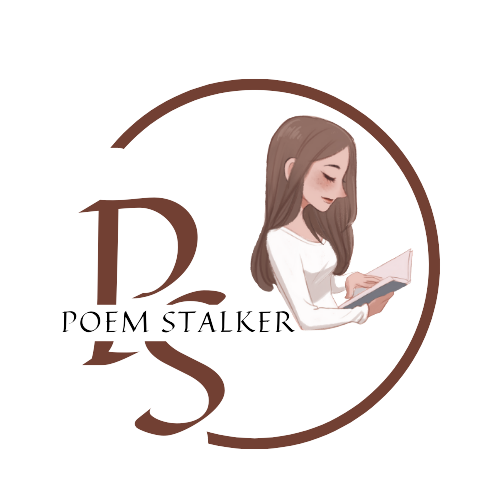Table of Contents

In poetry, a stanza is a grouped set of lines within a poem, usually set apart from other stanzas by a space or a distinct pattern of indentation. It are the equivalent of paragraphs in prose writing, but in poetry, they serve a more structured and artistic purpose.
It help organize the poem’s content, establish its rhythm, and provide a visual and auditory separation of ideas. Different poems can have varying numbers of lines within each stanza, and the arrangement of lines can also contribute to the poem’s overall meaning and effect.
It can vary in terms of line length, rhyme scheme, and metrical pattern, depending on the specific form of poetry being used. Some common stanza forms include the couplet (two-line), tercet (three-line), quatrain (four-line ), and more complex forms like the sonnet, villanelle, and sestina.
The division of a poem into stanzas can create a sense of rhythm and pacing, allowing the poet to control the flow of ideas and emotions within the poem. Each can represent a distinct unit of thought, emotion, or imagery, contributing to the overall structure and impact of the poem.
Purpose Of Stanzas in Poetry?
- Structure: Divide the poem into units, like paragraphs in prose.
- Rhythm: Establish the poem’s musical flow and meter.
- Pauses: Provide natural breaks, influencing reading pace and interpretation.
- Emotion and Theme: Segment different ideas, emotions, or themes.
- Visual Impact: Contribute to the poem’s visual appearance on the page.
- Meaning: Enhance interpretation by highlighting contrasts and connections.
- Rhyme and Form: Support traditional rhyme schemes and patterns.
- Narrative: Guide the progression of a story in narrative poetry.
- Artistry: Allow for visual experimentation in concrete poetry.
In essence, it shape the poem’s structure, rhythm, and meaning while providing both visual and emotional cues for readers
Different type

Certainly, there are several different types in poetry, each with its own distinct characteristics. Here are a few examples:
- Couplet: Consisting of two lines, often rhyming. Couplets can stand alone or be part of a longer poem.
- Tercet: A three-line . It can have various rhyme schemes, such as AAA, ABA, or ABC.
- Quatrain: A four lines. Quatrains are versatile and can have different rhyme schemes like AABB, ABAB, or ABCB.
- Cinquain: A five-line . The most common form follows a syllable pattern of 2, 4, 6, 8, and 2 syllables in each line.
- Sestet: Composed of six lines. Sestets can appear as the second part of a sonnet, following the octave.
- Octave: An eight-line , often used in the first part of a sonnet. It typically follows a rhyme scheme like ABBAABBA.
- Spenserian Stanza: A nine-line used by Edmund Spenser in his poem “The Faerie Queene.” The rhyme scheme is ABABBCBCC.
- Ballad Stanza: A quatrain with a rhyme scheme of ABAB, often used in ballads and folk songs.
- Villanelle Stanza: A highly structured used in the villanelle form, consisting of five tercets followed by a quatrain.
- Haiku: A traditional Japanese form with three lines, following a syllable pattern of 5-7-5.
- Pantoum: A form originating from Malaysia, using quatrains where the second and fourth lines of each stanza become the first and third lines of the next stanza.
- Sonnet: Traditionally composed of 14 lines, with various rhyme schemes. The Shakespearean (or English) sonnet uses three quatrains followed by a final couplet.
These are just a few examples of the many stanza forms that poets use to structure their work. Each type of stanza offers unique possibilities for rhythm, rhyme, and narrative within a poem.
Different between formal verse and free verse
“Formal verse” and “free verse” are two distinct approaches to writing poetry, each with its own characteristics and rules. Here’s a breakdown of the differences between the two:

Formal Verse:
- Structure and Meter: Formal verse adheres to specific rules regarding rhyme scheme, meter, and stanza patterns. These rules can be quite intricate and vary depending on the specific form being used (such as sonnets, villanelles, or sestinas).
- Rhyme Scheme: Poems in formal verse typically follow specific rhyme schemes, where the ending sounds of certain lines match according to a predetermined pattern.
- Meter: Meter refers to the rhythmic pattern of stressed and unstressed syllables in a line of poetry. Many formal verse forms require a particular meter, such as iambic pentameter or trochaic tetrameter.
- Structure: Formal verse often has a distinct structural arrangement of stanzas and lines. For example, sonnets have 14 lines divided into specific quatrains and a final rhymed couplet.
- Traditional Feel: Formal verse is often associated with a more traditional and structured style of poetry. It has a historical connection to classical poetry and tends to evoke a sense of formality.
Free Verse:
- No Set Rules: Free verse, as the name suggests, does not adhere to strict rules regarding
 rhyme, meter, or stanza pattern. It allows poets more creative freedom in how they structure their lines and stanzas.
rhyme, meter, or stanza pattern. It allows poets more creative freedom in how they structure their lines and stanzas. - Rhythm and Sound: While free verse lacks a strict meter, poets still pay attention to the natural rhythm and flow of language. Sound patterns, such as alliteration and assonance, can still be used deliberately.
- Unconstrained Rhyme: In free verse, rhyme is not required, though poets may choose to use it for artistic effect. When used, rhyme in free verse is often less predictable and more subtle.
- Variable Line Lengths: Free verse often features lines of varying lengths. The poet determines line breaks based on the desired emphasis and meaning of the poem.
- Modern and Experimental: Free verse is often associated with modern and experimental poetry. It allows poets to explore unconventional language, themes, and forms.
In essence, formal verse follows strict rules of rhyme, meter, and structure, while free verse allows for greater flexibility in these aspects. Formal verse can have a traditional and structured feel, while free verse encourages modern and innovative approaches to poetic expression.
What Is a Rhyme Scheme?
A rhyme scheme is the pattern of rhyming words at the end of lines in a poem. It’s a way to organize the rhyme pattern within a stanza or throughout an entire poem. In written form, rhyme schemes are usually indicated using letters to represent corresponding rhyming sounds.
Each unique rhyme sound is assigned a different letter. For example, if the first line ends with a word that rhymes with “cat,” it might be labeled with the letter “A.” If the second line also rhymes with “cat,” it would also be labeled “A.” If the third line rhymes with a word that doesn’t rhyme with “cat,” it might be labeled “B.” This pattern continues throughout the poem.
Common types of rhyme schemes
- Couplet (AABB): Each stanza consists of two lines that rhyme with each other.
- Alternate Rhyme (ABAB): The first and third lines of a stanza rhyme with each other, and the second and fourth lines rhyme with each other.
- Enclosed Rhyme (ABBA): The first and fourth lines of a stanza rhyme with each other, and the second and third lines rhyme with each other.
- Sonnet (Shakespearean, ABABCDCDEFEFGG): A Shakespearean sonnet comprises three quatrains (ABABCDCDEFEF) followed by a final rhymed couplet (GG).
- Sonnet (Petrarchan, ABBAABBACDCDCD or ABBAABBACDECDE): A Petrarchan sonnet often uses an octave (ABBAABB) and a sestet (CDCDCD or CDECDE) with varying rhyme schemes.
- Ballad (ABCB): The second and fourth lines of a stanza rhyme with each other, while the first and third lines do not rhyme.
- Limerick (AABBA): The first, second, and fifth lines of a stanza rhyme with each other, and the third and fourth lines rhyme with each other.
- Terza Rima (ABA, BCB, CDC, …): A terza rima poem uses a rhyme scheme in which each line rhymes with the next line and the line after it (ABA, BCB, CDC, and so on).
- Villanelle (ABA ABA ABA ABA ABA ABAA): A villanelle is a 19-line poem with a specific pattern of repeating A and B rhyme sounds.
- Sestina (ABCDEF, FAEBDC, CFDABE, ECBFAD, DEACFB, BDFECA, ECA or ACE): A sestina uses a complex pattern of end-words in six-line stanzas, where the order of the words is rotated in each stanza.
SOME FACTS ABOUT STANZA
Stanza can refer to several different things depending on the context, so here are some facts about different aspects of the term “stanza”:
- Poetry:
- In poetry, a stanza is a group of lines that form a structural unit within a poem. Stanzas are often separated by spaces or line breaks and are used to organize the poem’s content and convey meaning.
- Common types of stanzas include couplets (two lines), tercets (three lines), quatrains (four lines), and so on.
- The arrangement and number of lines in a stanza can vary widely, depending on the poetic form and style of the poem.
- Music:
- In music, a stanza can refer to a section of a song that typically contains a specific set of lyrics and melody. It is often repeated throughout the song.
- In some musical forms, such as folk songs and hymns, each stanza may have the same melody, while in others, like many popular songs, the melody may vary between stanzas.
- Literary Term:
- In literature, the term “stanza” is used to describe a grouping of lines in a poem or song lyrics, as mentioned above.
- Stanza breaks can be used strategically by poets to create pauses, emphasize certain ideas, or control the pacing of a poem.
- Computing:
- In the context of computing, “stanza” may refer to the Stanza programming language, which is a domain-specific language for writing code to parse and generate structured data formats like JSON and XML.
- Name:
- “Stanza” is also a given name for people, though it is relatively uncommon.
The meaning of “stanza” can vary greatly depending on the field or context in which it is used, so it’s essential to consider the specific context to understand its meaning accurately.
SOME MORAL VALUE OF STANZA
- It may convey the poet’s empathy for the suffering of others, encouraging readers to develop a sense of compassion and understanding.
- It can express themes of love, kindness, and compassion, promoting these as desirable values in society.
- Poems often explore themes of justice and fairness, urging readers to consider the importance of upholding moral principles and treating others justly.
- Some stanzas may inspire resilience and determination, emphasizing the value of perseverance in the face of adversity.
- Poetry stanzas can advocate for environmental ethics, emphasizing the importance of caring for the natural world and living in harmony with it.
- Poets can use stanzas to address issues of inequality, discrimination, and social justice, prompting readers to reflect on these topics and consider how to promote fairness and equality.
- It may encourage the virtues of honesty and truthfulness, highlighting the importance of integrity in one’s actions and words.
- Poems often celebrate the value of friendship, community, and human connection, reminding readers of the importance of building meaningful relationships.
- Some stanzas may encourage self-reflection, urging readers to examine their own values, beliefs, and actions to lead a more morally upright life.
- It can offer messages of hope and optimism, inspiring readers to maintain a positive outlook and work towards a better future.
It’s important to note that the moral values conveyed in poetry are subjective and can vary widely based on the poet’s perspective and the interpretation of the reader. What one person finds morally significant in a stanza, another might perceive differently. Poetry often serves as a means of exploring and expressing complex moral and ethical questions, allowing readers to engage with these issues on a personal and emotional level.
Life with stanza
Life with a structured pattern in poetry, where lines are grouped together to convey thoughts and emotions, can offer a similar approach to how individuals structure and compartmentalize their experiences. In the realm of poetry, these structured groups of lines serve as units to express various aspects of life, emotions, or stories. In the broader context of existence, such an approach can reflect how individuals organize their thoughts, memories, and emotions, finding significance in each segment or division to create a cohesive narrative of their lives.
In poetry, these structured divisions of lines not only provide a framework for conveying meaning but also allow for the exploration of emotions, experiences, and perspectives in a deliberate and artistic manner. Similarly, in life, individuals often seek to compartmentalize their experiences and emotions, finding meaning in each separate segment. Just as poets craft their verses with careful consideration of the arrangement and content of each unit, people shape their life stories through the thoughtful arrangement of their experiences and the lessons they draw from them. This approach to life, akin to the structure found in poetry, can offer a sense of order, meaning, and purpose in the tapestry of human existence.
- Structured Expression: Life can be viewed as an organized and structured expression of experiences, much like how poetry uses structured lines and segments to convey emotions and thoughts.
- Compartmentalization: People often compartmentalize their life experiences, emotions, and memories, giving each segment significance and meaning.
- Artistic Parallel: The structured approach to life reflects the artistic approach seen in poetry, where each section contributes to the overall narrative.
- Meaningful Divisions: Just as poets craft verses with care, individuals shape their life stories by thoughtfully arranging their experiences, deriving lessons, and finding meaning in each part.
- Sense of Order: This approach to life provides a sense of order, purpose, and coherence in the complex tapestry of human existence.
Life with poetry
- It provides a creative outlet for expressing your emotions, thoughts, and experiences. Writing poetry can help you process and make sense of your feelings.
- Reading and writing poetry can encourage self-reflection. It allows you to explore your own beliefs, values, and experiences, leading to personal growth and insight.
- It often employs vivid and metaphorical language, enhancing your ability to communicate effectively. This can be valuable in both personal and professional relationships.
- Reading poetry allows you to step into the shoes of the poet and the poem’s characters, fostering empathy and a deeper understanding of others’ perspectives and experiences.
- Engaging with poetry can boost your creativity by exposing you to new ideas, forms, and styles of expression. It encourages thinking outside the box.
- It celebrates the beauty and nuances of language. Reading and writing poetry can deepen your appreciation for words and their power.
- Engaging with it, whether by reading, writing, or listening, can be a source of relaxation and stress relief. It provides an opportunity to escape from daily pressures and immerse yourself in the world of words.
- It has the ability to connect people across time and cultures. You can find solace and connection in knowing that others have experienced similar emotions and challenges throughout history.
- It often contains inspirational themes and messages. Poets often explore themes of hope, resilience, and the human spirit, which can serve as a source of motivation.
- Exploring the poetry of different cultures exposes you to diverse perspectives, traditions, and worldviews, broadening your cultural horizons.
- It can be intellectually challenging, requiring careful analysis and interpretation. Engaging with complex poems can stimulate your intellectual curiosity and critical thinking skills.
- Joining or forming a poetry community, whether in person or online, can provide a sense of belonging and the opportunity to share and discuss your work with others who share your passion.
- Through poetry, you can leave a legacy of your thoughts, emotions, and experiences for future generations. Your words may inspire and resonate with others long after you’re gone.
- How may I help further? let me know in down comments. Easy with www.poemstalker.com
- Want to know amazing facts about history Read now
